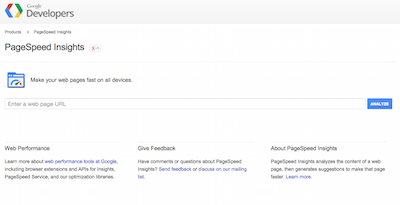Tips for a Simple Technical Site Analysis
A great way to begin an SEO campaign is to start with a series of site audits, beginning with a Technical Site Analysis. This particular audit will allow you to identify technical shortcomings, which may be hindering your site from performing well online and ranking well in search engine results pages. From the results of your tech audit, you’ll be able to determine which opportunities to address first, in order to boost your site’s performance, often somewhat immediately.
 I’m going to share a few ways that businesses and individuals can analyze their websites from a technical standpoint. Remember, in an agency setting, with the help of an awesome development team, the ability to dig much deeper into a site’s technical elements and address issues is much greater. However, these tips will help you get a great start with identifying some of the most basic technical shortcomings that your site may be experiencing.
I’m going to share a few ways that businesses and individuals can analyze their websites from a technical standpoint. Remember, in an agency setting, with the help of an awesome development team, the ability to dig much deeper into a site’s technical elements and address issues is much greater. However, these tips will help you get a great start with identifying some of the most basic technical shortcomings that your site may be experiencing.
Site Architecture
The way a website is organized plays a significant role in creating a positive user experience and impacting rankings. Typically, sites make use of a navigational menu with horizontal and vertical structures. It’s important to spend some time examining how the information of your site is outlined within these structures. Does your website include a mirrored navigational menu in the footer? Are you utilizing breadcrumb structures?
Tip: Spend some time navigating your site as if you’re a new user. Next, do the same thing with search crawlers in mind. Ask yourself, “Is this a positive user experience? Can I quickly and easily find the information I’m looking for?”
Crawling and Indexation
Ensuring that your site has the ability to be properly crawled and indexed by search engines is crucial for performing well online. Two of the most basic elements that can alter your site’s online visibility are XML sitemaps and robots.txt files.
XML sitemaps serve as a blueprint for websites. They are designed to provide search engines with a detailed list of a site’s pages and their locations. XML sitemaps are often updated and resubmitted to search engines in order to demonstrate changes made to the website. The standard format for XML sitemaps is domain/sitemap.xml.
Robots.txt files help webmasters control search crawlers’ access to pages and directories within a site. The standard format for robots.txt files is domain/robots.txt.
Tip: Perform a simple search. Open your browser and check for an XML sitemap and robots.txt file using the standard formats. You may be amazed at what you find (or don’t find).
PageSpeed
Page load time is another important factor in determining a site’s rankings. By conducting a PageSpeed test, you can quickly identify which elements are hindering your site’s visitors from experiencing a fast page load time.
Tip: Take advantage of Google’s PageSpeed Insights tool. Google will provide specific recommendations for improving your site’s speed.

Onsite Optimization
Altering the meta data of your site’s pages is the best way to control how your site appears as results in SERPs. Title tags and meta descriptions are some of the most important elements when it comes to building online visibility in the eyes of the right audience and encouraging users to click. Title tags are displayed as the blue, clickable text in search results, while meta descriptions serve as the page summaries. Is your site optimized for search engines?
Tip: Check for onsite optimization with the help of a right click and “View Page Source” via any page of your site. Search for these tags:…and.
More on onsite optimization best practices later. 😉
Offsite SEO
Here, I’m referring to building your site’s backlink portfolio by earning quality links. This is critical for building online credibility to maximize visibility. It’s important to check whether valuable third-party sites are linking to your content. It’s equally as important to check for negative, spammy links that need eliminating.
Tip: Take advantage of one of the various tools online for checking backlinks. One of our favorites at Blueprint is MOZ’s Open Site Explorer.
Please note that these tips only scratch the surface when it comes to analyzing your site from a technical standpoint. However, by following these steps, businesses and individuals can quickly and easily determine if their sites are experiencing any major shortcomings.
For help in addressing your site’s technical issues, remember that you can always call the professionals at Blueprint.



